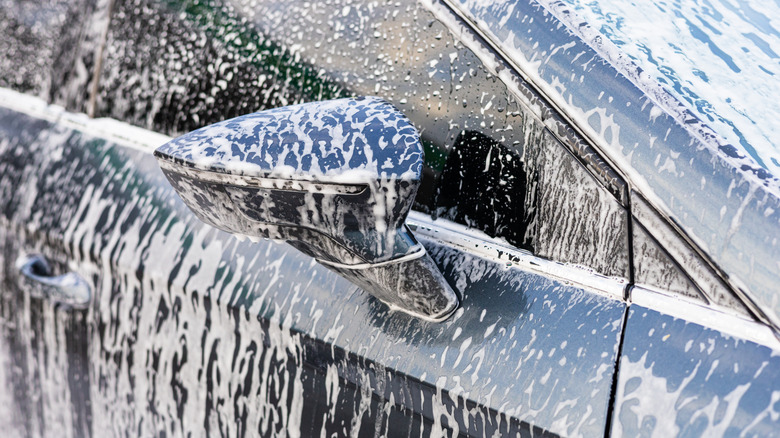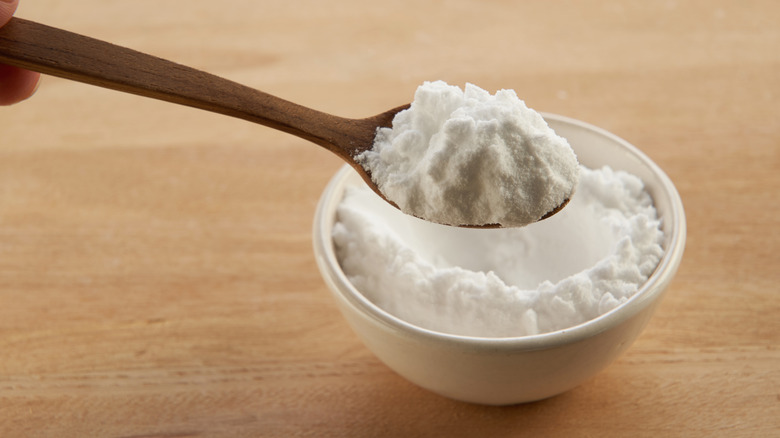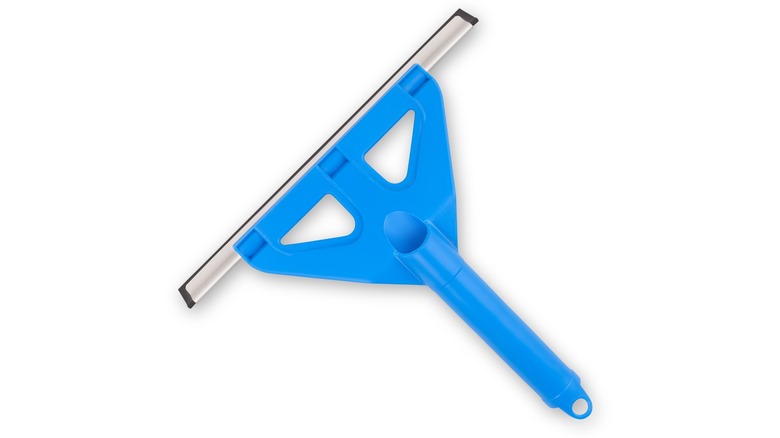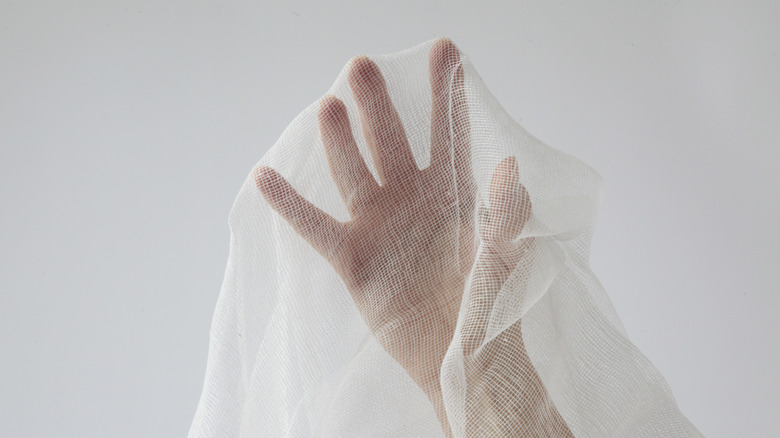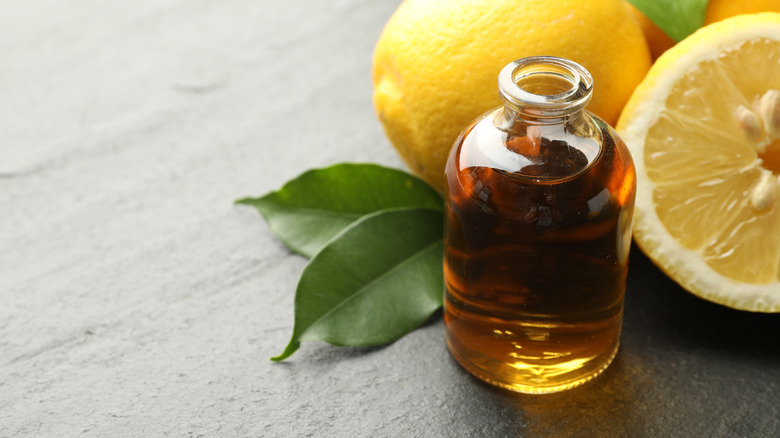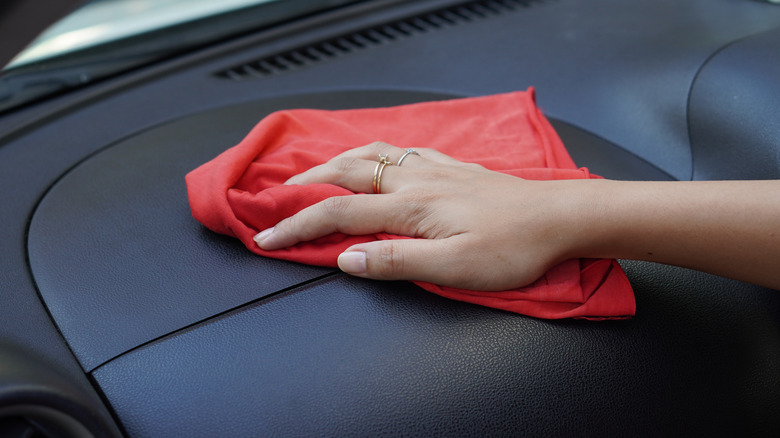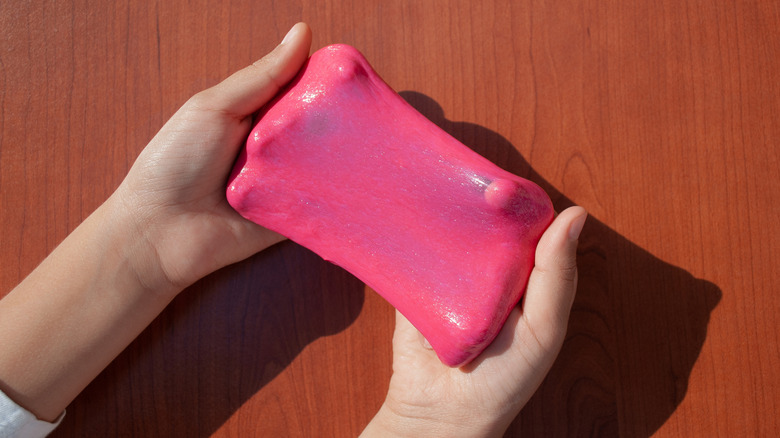13 Cheap Household Items You Can Clean Your Car With (And How To Use Them Safely)
You could take a trip to an automatic car wash and pay an arm and a leg to have your ride soaped, brushed, and rinsed. Or, you can use items you probably already have at home to clean up your car for much cheaper.
Cleaning your car inside and out doesn't require fancy tools or products. Of course, you could always go down the aisle at Walmart or Autozone and pick out separate cleaning products for the outside of the car, window glass, interior detailing, tires, headlights, and upholstery. There's a cleaner for every job, and they typically work well, but they can also get expensive, especially if you're buying them all at once. What you might not realize is that common items in your pantry and bathroom can do the job just as well, at a fraction of the cost. Skip the trip to the automotive aisle and save some money with these 13 cheap household items to clean your car, inside and out.
Baking soda and water
Baking soda is a wonder ingredient, giving you tons of uses in the kitchen and the cleaning cabinet. It's a mild abrasive that can rub away dirt and grime. Specifically for cars, you can use baking soda to scrub hub caps, upholstery, and windshield wiper blades. Add three parts of baking soda to one part water, then mix thoroughly to create a paste. Use this mixture to wash your car's hub caps, allowing the paste to stay on the hub caps for several minutes before wiping away the paste and rinsing them clean. You can repeat this process for your wiper blades.
If you have some lingering smells in your car, like fast food fumes or your teenager's gym bag, you can sprinkle some baking soda on the seats and floor mats. This absorbs some of the odor and vanishes when you vacuum the upholstery. Baking soda can also help to remove stains from upholstery by making a paste and gently rubbing it into the stain. Since baking soda is slightly abrasive, it's not the best option for use on painted surfaces.
Toothpaste
Headlights typically come with a special coating that protects them from the sun, but that coating can wear off. This leaves the covering vulnerable to oxidation, which can cause your headlights to look cloudy over time. Chemicals and dirt can also dull the shine of your headlights and make them less effective. Simply washing your car doesn't always fix the issue. Toothpaste is an unlikely candidate that can remove the cloud and restore clarity.
Toothpaste doesn't fix any physical damage, but it does help to remove grime and buildup, allowing your headlights to shine brighter. After cleaning and drying your car thoroughly, apply a small amount of toothpaste to the headlight cover (about the same amount you'd use to brush your teeth). It's helpful to tape the area around the headlight to keep your work focused and avoid damaging other parts of the vehicle. Rub a microfiber cloth or a toothbrush in a circular motion to polish the headlight surface. Then rinse the headlight and dry it. Alternatively, you can use baking soda and vinegar to clean your car's headlights naturally.
Coconut oil
If you have stubborn bumper stickers or decals on your car that won't peel off easily, coconut oil works like a charm. It's slick, all natural, and safe for skin and your car's auto glass. (If you have stickers on the paint, it's best to test a small patch first before applying it to the entire area.) This option also doesn't take much of it, which will help you save money. Coconut oil looks more like a balm than an oil. It's solid at room temperature and easy to work with, plus you don't have to worry about messy drips while you're trying to work.
To use coconut oil to remove stickers from your car, scoop a little into your fingers (or a cotton swab or cotton ball) and rub over the sticker residue. Let it sit for a few moments, then use a microfiber cloth to remove the residue. You might have to use a little elbow grease, depending on how much of a mark the sticker left behind. It might also take more than one application, so repeat the process until all the residue is removed. This method works best when you've peeled away as much of the sticker as possible, but need extra help getting the remains.
Rubbing alcohol
If you park outdoors on a regular basis, getting tree sap on your windshield is almost unavoidable. Regular windshield washer fluid doesn't always cut it, but leaving a sticky mess in your line of sight is not an option. One solution is to use rubbing alcohol to cut through the stickiness without a lot of scrubbing.
To use rubbing alcohol to remove tree sap from your windshield, soak a cotton ball in the alcohol, then let it sit on the sappy area for a few minutes. Wipe the sap away, then repeat the process if necessary. This method also works well for bumper sticker or decal residue. It's not recommended to use straight rubbing alcohol on your car's painted surfaces, as this could damage the paint, and it can also damage the rubber seals around the windshield if you're not careful. However, you can dilute the alcohol before applying it to sap-covered areas, and that will mitigate the risk quite a bit. It's always best to test a small area first to make sure the product will not damage your vehicle.
White vinegar
Washing a car by hand can take upward of 30 minutes, and more if you are cleaning the inside and the outside. When you're done, you expect the car to look clean, but all that hard work can immediately vanish if water spots are left behind. Vinegar is one of the cheapest and most common ingredients you probably already have that can help fight water spots.
One option is to clean your car windows with a mixture of vinegar and water. Spray it onto the inside and outside of each window, then wipe it clean with a microfiber cloth. The microfiber cloth helps you avoid streaking, while the vinegar helps to prevent water spots from forming. You can also dilute vinegar to spray on your car's exterior and wipe clean to ensure all your hard work wasn't for nothing. Make sure you dilute it, as straight vinegar could potentially damage your car's paint. When in doubt, try your solution on a small test area before applying to the whole car.
Shower Squeegee
If you have pets who love to ride along with you, you're probably carrying a little bit of them everywhere you go, even when they stay behind. I'm talking about pet hair, of course. Pets that shed send their fur flying everywhere, even to places they've never touched. Not even a good vacuum can get all the fur out of your car mats, at least not without a little help from a shower squeegee.
In case you don't have one yet, a shower squeegee is a handled tool with a long, flat blade. The blade is firm, allowing it to glide over surfaces to push solids or liquids along its path. Squeegees are helpful for cleaning wet areas like showers, helping to remove wetness that could cause mold or mildew. But they're not just for steering liquids; they can also help to collect pet hair buried deep in fabrics like car seats and floor mats. They only cost a few bucks and can remove pet hair that a normal vacuum might leave behind. Just brush the squeegee firmly along the surface of the floor mat or seat, then collect and remove the hair it stirs up.
Shaving Cream
Many people use popular window cleaners like Windex to clean their auto glass and mirrors, but this can be dangerous since these products may contain ammonia, a strong-smelling chemical that can affect your health. A better solution is to use a product that has relatively no smell but can still get the job done, and shaving cream checks both boxes.
Shaving cream is an effective glass and mirror cleaner because of its ingredients, like water, soap, and alcohol. It's relatively inexpensive (cheap brands work just as well in this case), plus it can work as an anti-fogger. The ingredients destroy the water's surface tension, which is what's responsible for allowing water to bead on glass and create a fog-like effect. If you choose to use shaving cream as a glass and mirror cleaner, it's helpful to use newspaper or a microfiber cloth to remove the cream completely and leave a streak-free shine. Shaving cream can get a bit messy, so bring plenty of towels.
Cheesecloth
Dealing with dried bug guts covering your bumper is one of the most time-consuming (and least fun) things about washing a car. It always takes some extra elbow grease and cleaning product, and some points are trickier to remove than others. But one kitchen item can make the process a lot easier while making scratching your paint job less likely: cheesecloth.
Cheesecloth is a soft, gauze-like cloth that's finely woven and contains small holes throughout. It's mainly used like a sieve when making cheese, helping to separate curds from whey. Because of its texture, it's less likely to cause scratches to your bumper as you put every ounce of force you have into removing dead bugs from your bumper. And in most cases, you won't even need that much force since the cloth is highly effective at cleaning. To use cheesecloth on your car, soak it in a mixture of dish soap and water for a few minutes. Then scrub the soapy cloth over the bumper to lift and remove bugs and other lingering debris.
Baby wipes
There are few things in life more universally useful than baby wipes. Besides using them during diaper changes, they're good for just about any cleaning job, from sticky hands to minor spills to dirty car cupholders and more. Whether you have young children or not, keeping a stash of baby wipes in your car is a good idea to keep the interior neat and tidy in between deep cleans.
Baby wipes are soft and gentle, so they won't scratch surfaces or screens in your car. They're helpful for wiping dusty dashboards, shifters, vents, consoles, door handles, steering wheels, seat belt buckles, or any other little nook and cranny in your car that needs attention. The only major downside is that wipes can dry out if not used in a timely manner. You can extend their life by placing them in a sealed container, which may help to lock in their moisture. If they do dry out, you can soak them in your own solution or just plain water.
Lemon juice and olive oil
The only thing better than a clean car interior is a clean car interior that also smells fresh. One way to get that is to use a mixture of lemon juice and olive oil to clean your dashboard. It doesn't take much of each to remove the dust and leave a sparkling shine that lasts for a long time.
Olive oil is a great choice because it cleans and conditions. Parts of your dash that sit in direct sunlight can start fading or cracking over time, but olive oil restores some of the moisture and acts as a protective coating. Lemon juice is a natural defense against bacteria and bad odors, plus it can help remove grease and stains. To use this combination to clean your dash, mix equal amounts of lemon juice and olive oil in a spray bottle, shake well, and spray it onto a microfiber cloth. Use the cloth to wipe the dashboard, leaving a beautiful shine behind. This mixture is generally safe for all materials, but if you have a leather interior, you may want to test a small area before applying it on a larger scale.
Castor oil
Tire shine products will give your tires that "wet look" even when it's not raining. Tires look squeaky clean for days, or even weeks. But the tire shine you buy in stores can be a bit pricey, not to mention it's filled with toxic chemicals. A cheaper and more eco-friendly way to achieve the new tire look is to use castor oil. It reduces your exposure to chemicals (tire shine can be a bit on the smelly side).
After cleaning each tire like normal, dry completely before applying a thin layer of castor oil to the tire wall. Pour or spritz the oil onto a lint-free cloth to apply it to the tire, which will help to evenly distribute it and not leave lint behind. Make sure not to apply any oil to the tire tread. Your tires will get a nice, shiny sheen that looks clean and new. You can also use castor oil to clean rubber or plastic car floor mats and your dashboard (similar to the lemon juice and oil trick).
Peanut butter
Many common car cleaning problems have multiple solutions. That's good news for car owners: if you don't have one ingredient on hand, another could do the job just as well. That's the case with removing tree sap, specifically pine sap. If you don't have rubbing alcohol on hand, head to the pantry and break out the peanut butter.
While messy, peanut butter may be effective at removing small areas of sticky pine sap that haven't hardened. Apply a small amount to the sap and let it sit for a few minutes, then wipe it away. The idea is that fats in products are hydrophobic, which allow them to push water from the sap. This loosens the bond the sap has on your vehicle, allowing it to be removed. It might not be the cleanest option out there (peanut butter can be messy to work with), but it will do in a pinch if you don't have other options on hand, like rubbing alcohol.
Borax
Whether you like to use spray cleaners, cleaning wipes, sponges, vacuums, microfiber cloths, feather dusters, or something else along those lines, there are some places where even precision cleaning tools can't go. Areas like in between your air vents, the deep grooves in cupholders and consoles, and the little crevices around the gear shifter don't get the clean treatment as often as they should. These spaces call for special cleaning solutions, like the car cleaning slime from those viral videos, only made with borax.
Combine borax with water and glue to make a stretchy, slime-like putty. You can even add food coloring to make it pretty, if that's your thing. This amorphous putty can change its shape to squeeze into tight or odd spaces. Its stickiness will attach to dirt and debris, effectively lifting it away without leaving a sticky residue behind. This compound is super easy and quick to make, costs very little, and is actually fun to use.
